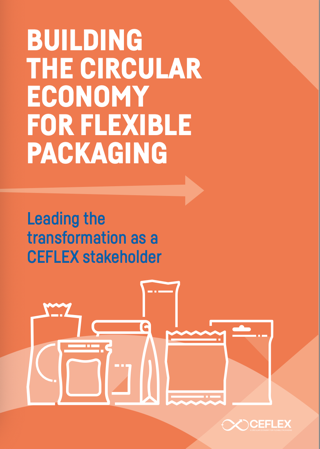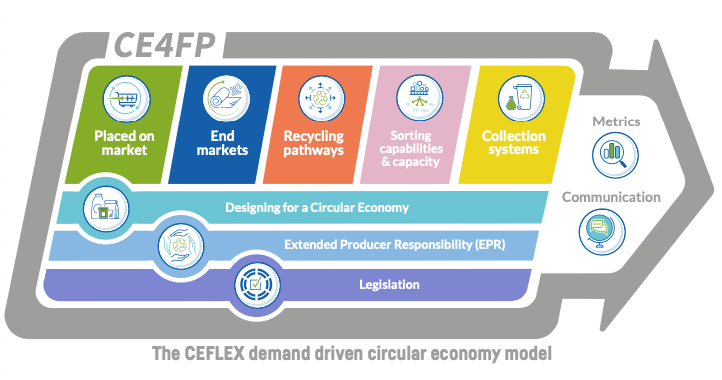What we do
We drive collaboration, innovation and implementation of a Circular Economy for Flexible Packaging – equipping our stakeholders, decision-makers and targeted wider industry with the analysis and information required to accelerate progress.
- Design: deliver robust ‘Designing for a Circular Economy’ guidelines, testing and tools to boost sustainable decisions, improve sorting and recycling, and drive quality
- Infrastructure & Systems: recommend recycling & sorting capacities and technologies, plus the required collection infrastructure to meet PPWR and full circularity of flexible packaging
- End Markets: identify and stimulate sustainable end markets for secondary materials recycled from flexible packaging
- Business Case: model and propose a sustainable financial future in which flexible packaging can be collected, sorted, recycled and returned to the economy in quantity and at a competitive quality/price for potential end market applications
- Collaboration: provide a platform and community to foster collaboration, innovation and progress – for our stakeholders, partners, EPR schemes and more
- Legislation: give timely technical input and assessment to support a framework that accelerates #MissionCircular, standards and implementation of key legislation, such as the Packaging and Packaging Waste Regulation (PPWR)

Join CEFLEX and lead the transformation
Are you a leading actor in flexible packaging? Looking to navigate legislative targets and lead the transformation to circularity?
CEFLEX stakeholders are frontrunners focused on ensuring ‘first mover’ advantage that benefits both themselves and the environment.
They have access to unparalleled collective analysis, R&D insights, business opportunities and the legislative landscape.
Consult the welcome pack and contact use to find out more: info@ceflex.eu
How we do it
The CEFLEX ‘demand-driven’ circular economy model brings additional definition to the steps, actions and information needed to achieve #Mission Circular.
It also shapes our eight stakeholder-only work packages which meet twice a year to cover recent analysis and work to:
- Provide in-depth understanding and actions to drive implementation
- Ensure the framework conditions for success
In addition to targeted work package meetings and actions, stakeholder organisation can:
- Access a wealth of resources, presentations and recordings on our dedicated stakeholder portal
- Attend 3 x year General Meetings – our flagship events and hub for the latest analysis, discussion and even technical site visits
- Benefit from regular stakeholder-exclusive webinars on key topics with extended Q&As with participating and invited experts
- Participate in value chain meetings covened and led by the respective CEFLEX steering committee members, to assess progress and fine tune the steps required to achieve #MissionCircular


